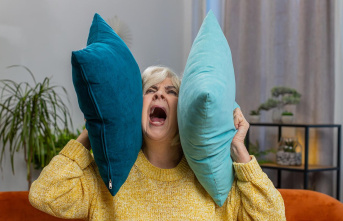Since ancient times, hysteria has been defined as a female disorder. In the 19th century, psychoanalysis emerged, a treatment based on conversation and more comprehensive than other methods –such as cold showers–. In principle, women only appeared as objects of investigation. However, soon these patients take an active role. They ask to express themselves, an essential factor in a cure for the word. In addition, they point out to their doctors the way forward.
After caring for her sick father in Vienna, Bertha Pappenheim suffered various symptoms: nightmares, muteness, hallucinations... She could not explain her profound anguish. She suggested to her doctor that he hypnotize her and question her about the causes of her ailments, so she could remember the origin of her fears. Under hypnosis, Ella Pappenheim relaxed and was able to travel into the past. When she visualized the moment of the traumatic episode, she recounted it, relieving herself. For example, she recalled that her phobia of drinking all kinds of liquids had started because one day she saw a dog drinking from her glass. This cathartic method was a form of liberation. Pappenheim's doctor, Josef Breuer, shared this technique with a young neurologist, Sigmund Freud, then unknown. Both published a book, Studies on Hysteria, where they told her case (they called her Anna O.). On this basis, Freud developed the psychoanalytic method, and always recognized his debt to Pappenheim. Despite her relevant role in history and her great work as a social worker, fighting for the rights of women and children, the figure of Bertha Pappenheim remains little known.
- Sabina Spielrein, the girl who experienced destruction
As a child she suffered terrible beatings at the hands of her father, which were followed by an overwhelming urge to masturbate. Consequently, in her youth she experienced sadomasochistic behaviors, mood swings and affective disorders. After an ordeal of clinics and electroshocks, she was psychoanalyzed by Carl Jung, who thought he saw hysterical symptoms in her, such as "seductive looks."
Spielrein studied medicine and investigated the human drive toward destruction. This influenced Freud to describe the death instincts, internal energies that lead us to self-destructive or aggressive behavior.
- Lou Andreas-Salomé, love of self
Strong and independent woman, she was related to intellectuals like Nietzsche. In Weimar she met Freud, struck by her "feminine charm and masculine intellectual acuity" – that's what it sounds like. Andreas-Salomé traveled to Vienna to train in psychoanalysis. She developed a broad vision of sexuality and eroticism, as the culmination of human existence. For her, narcissism was not a pathology, but a manifestation of self-love, a positive identification.
- Marie Bonaparte, the princess who investigated the orgasm
She was a descendant of Napoleon and as a child she was caught masturbating. A maid threatened her that if she kept doing it, she would die. She married the prince of Greece, but her sexuality was not satisfactory to him. She suffered from frigidity despite numerous lovers of hers. At first, she thought that the anorgasmia was due to the clitoris being too far from the vagina and not being stimulated during penetration. Somewhat obsessed, she underwent surgery several times, but things got worse.
She met Freud and became a patient, friend and psychoanalyst. She understood that psychological causes were more important than physical ones. After her psychoanalysis, she discovered that some childhood experiences could have conditioned her, along with rigid social conventions. More liberated, she continued to search for the sources of the orgasm, anticipating Masters and Johnson.
When the Nazis took Vienna, he helped Freud flee to London via Paris, saving him from the concentration camps.
- Christiana Morgan, dream cartoonist
Very close to Carl Jung, she traveled to Switzerland to be psychoanalyzed, as she suffered from severe depression and serious identity problems. There she developed the ability to capture her dreams by painting them in a notebook. In her watercolors the unconscious emerged.
At Harvard University, together with the famous American psychologist Henry Murray, Morgan created the Thematic Apperception Test (T.A.T.), a projective test based on images. By interpreting these ambiguous images, the patient brought out subconscious elements. Subsequently, Christiana's contribution was silenced, while Murray was enshrined as the sole author of the test.
The Mexican Jorge Volpi recovers it in his novel La Tejedora de Sombras.
At the same time that psychoanalysis is born, the female role is changing. The first psychoanalysts with medical studies actively participate in psychoanalytic organizations. They feel the need to take center stage.
From there, they will give a new vision of femininity and sexuality, amending the flat Freud, limited by his androcentric vision.
- Melanie Klein and child psychoanalysis
It gave a more feminist impulse to psychoanalysis, excessively patriarchal. She investigated the first stages in the development of babies: as important is the attachment of the child to the mother as the attachment of the mother to the child. Studying children, she developed the technique of the game. One day, with a girl who was withdrawn in the consultation, making the psychological examination difficult, Klein brought a box with toys. The girl began to open up and Klein found a way of communication: through play, the girl showed her inner world. The toy is a basic tool, it connects reality and fantasy. Since then, it has become essential to observe how infants play.
- Anna Freud, from rebel to father's bodyguard
Freud's young and wayward daughter was a rebellious teenager: she did not want to get married but to have a professional career. She had sadomasochistic fantasies, in which she experienced guilty pleasures: a gentleman very much like her father was whipping her. Her solution came when father Freud himself psychoanalyzed her. She joined the psychoanalytic society, becoming a guardian of orthodoxy and a pioneer of child analysis. In her work, she systematically organized the defense mechanisms that the self possesses.
- Joan Riviere, is femininity a mask?
In her book Femininity as a mask, Riviere denounces the difficulties in conquering an active role. Within the male professional system, the woman must progress with her knowledge, but she needs to repress rivalry so as not to overly challenge the system.
- Karen Horney, Unveiling "Womb Envy"
He emigrated from Berlin to the United States and energized psychoanalysis in Chicago and New York. She questioned Freud's dogmas about women. For example, Freud assumed that the key moment in girls' psychological development occurs when they compare themselves to boys and perceive that they lack penises. For Karen Horney, penis envy is a myth, the result of male narcissism. The dissatisfaction of women is due, above all, to the subordination they experience in the patriarchal society. And monogamy is not related to love, but to the man's need for possession and prestige.
- Arminda Aberastury and the early genital phase
In Argentina, Aberastury developed a game in which houses were built, useful for exploring emotions, following his teacher Melanie Klein. In addition, she stands out for an original proposal. Freud had proposed five stages in psychosexual development: oral, anal, phallic, latency, and genital. This last genital phase flourished in preadolescence. Aberastury described a previous genital phase, within child development, coinciding with teething and the abandonment of lactation. That is, the awareness of genitality can result in many cases earlier, appearing much earlier than Freud thought.
With psychoanalysts like Arminda and Betty Garma, the wave of psychoanalysis completes its journey around the world, returning to Europe with a more global proposal that broadens sexuality and questions the male-female dichotomy.
This article has been published in The Conversation.
7












